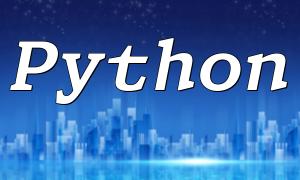In PHP programming, closures, generators, and reflection are important and commonly used features. Understanding their underlying principles helps us apply these features more flexibly, improving efficiency and code quality during development.
A closure is a function that can access variables from its outer scope, even when the function is called outside of that scope.
Underlying Principle: When PHP implements closures, it creates an internal class called `Closure` to represent the closure, and an object is created to store the closure's state and function body. This object is known as the closure object.
Here is a simple example of a closure:
$greeting = 'Hello';
$sayHello = function($name) use ($greeting) {
echo $greeting . ', ' . $name;
};
$sayHello('John'); // Output: Hello, John
In the above code, the closure function `$sayHello` uses the external variable `$greeting`. When the closure is created, the value of `$greeting` is saved in the closure object. When the closure function is called, it uses the saved value of `$greeting`.
A generator is a function that generates multiple values on demand. Unlike a regular function, a generator function returns a generator object, and the `yield` keyword is used to define the values to be returned.
Underlying Principle: When a generator function is called, it returns a generator object, which implements the `Iterator` and `Generator` interfaces. The `Iterator` interface defines the iteration behavior of the generator object, while the `Generator` interface provides methods for controlling the generator, such as starting the generator and resuming its context.
Here is a simple example of a generator:
function countdown($start, $end) {
for ($i = $start; $i >= $end; $i--) {
yield $i;
}
}
$generator = countdown(5, 1);
foreach ($generator as $count) {
echo $count;
}
In the above code, the `countdown` function is a generator that returns multiple values via the `yield` keyword. When the generator is iterated, it returns a value on each iteration.
Reflection technology allows you to dynamically retrieve and modify class, object, property, and method information at runtime.
Underlying Principle: PHP's reflection is implemented through the `Reflection` series of classes. The `Reflection` class provides functionality for reflecting on classes, methods, properties, etc., by calling the static methods of the class, such as `Reflection::xxx()`, to get the corresponding `Reflection` object. The object's methods can then be used to retrieve or modify the class's information.
Here is a simple example of reflection:
class Person {
private $name = 'John';
private function sayHello() {
echo 'Hello, ' . $this->name;
}
}
$person = new Person();
$reflection = new ReflectionClass($person);
$properties = $reflection->getProperties(ReflectionProperty::IS_PRIVATE);
foreach ($properties as $property) {
echo $property->getName() . PHP_EOL;
}
$methods = $reflection->getMethods(ReflectionMethod::IS_PRIVATE);
foreach ($methods as $method) {
echo $method->getName() . PHP_EOL;
}
In the above code, the `ReflectionClass` class is used to reflect on the `Person` class. The `getProperties` method is called to get private properties, and the `getMethods` method is called to get private methods.
By understanding the underlying principles of PHP closures, generators, and reflection technology, we can use them more effectively, unlocking their flexibility in real-world development. Additionally, having a deeper understanding of PHP's underlying implementation and internal mechanisms is essential for grasping the language's features and the principles behind it.










